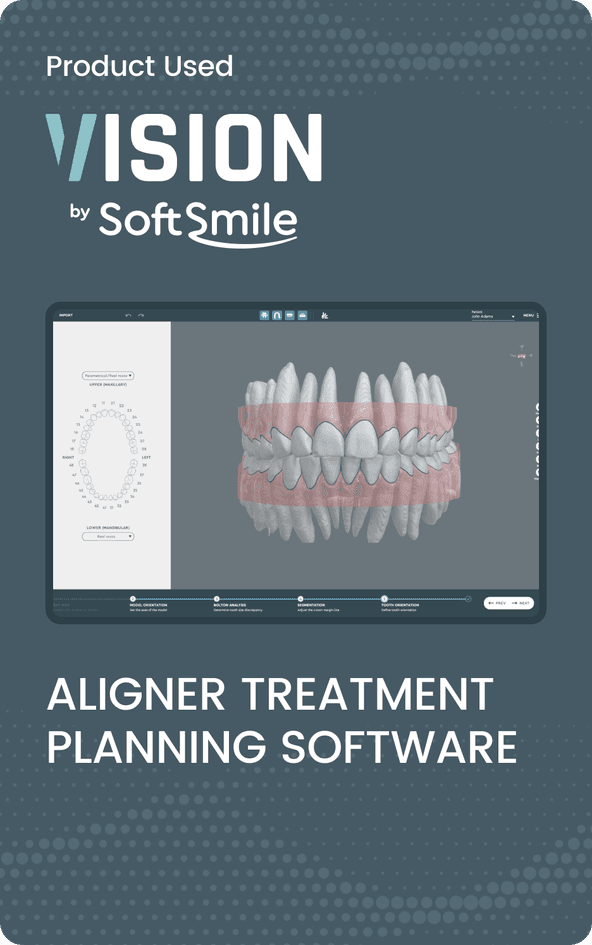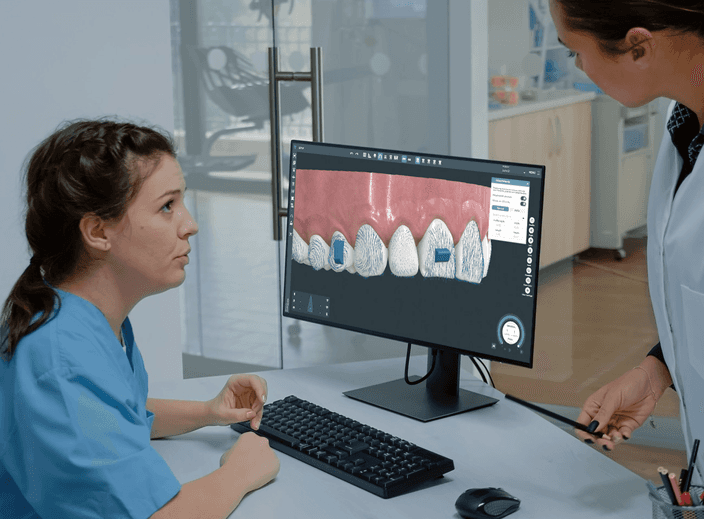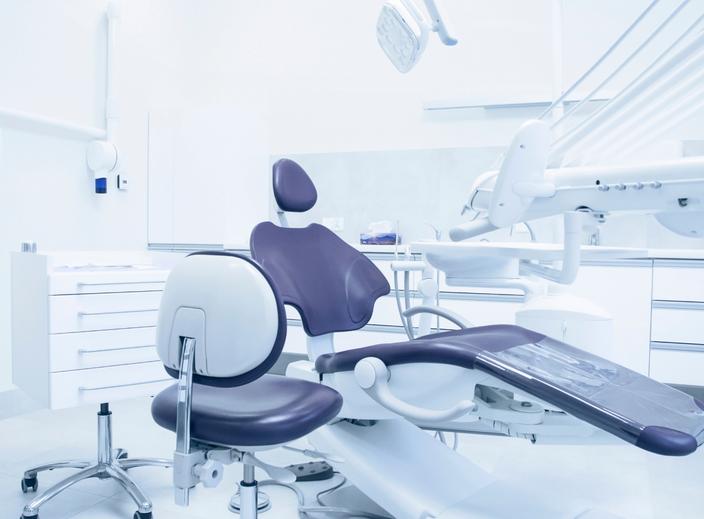June 30, 2025
Clear Dental Aligners: What Are They and How Do They Work?

Dr Sugz Maha
General Dentist
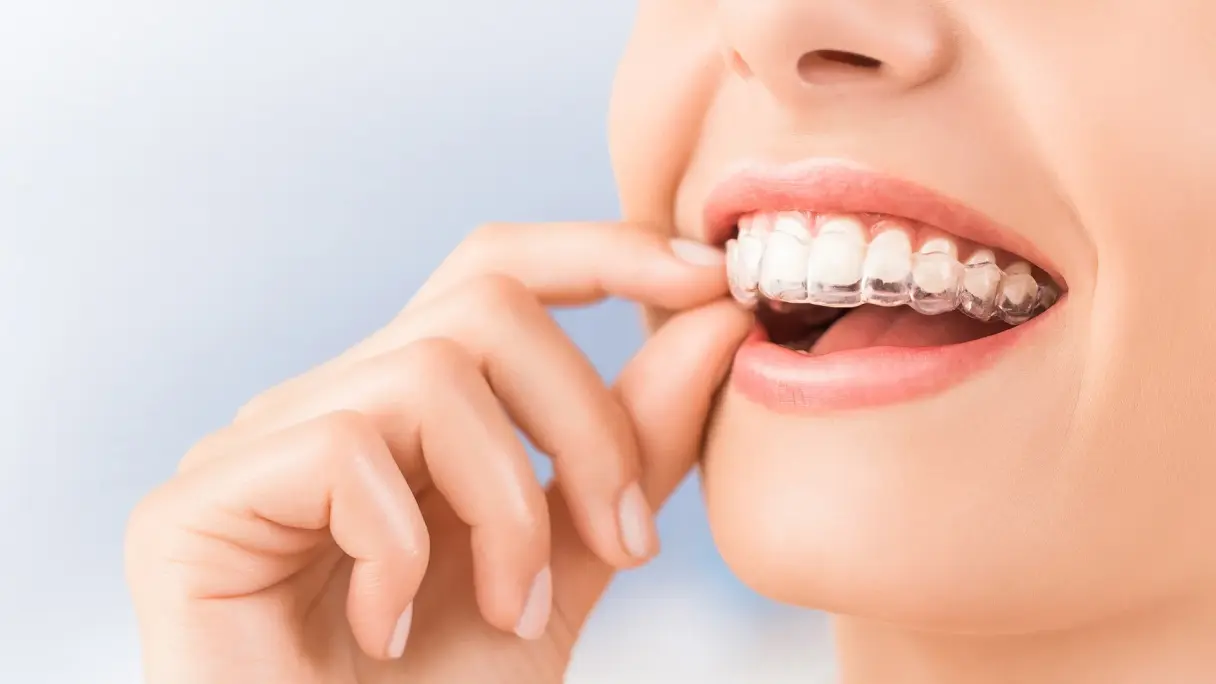
For years, fixed dental appliances have been the standard for orthodontic treatment. However, the technology of clear dental aligner therapy has rapidly grown in the last decade. Its popularity is clearly illustrated by its predicted growth — with projections reaching up to $32.7 billion by 2032.
As demand for aesthetic treatment options grows, aligners have become an almost-essential treatment modality to offer for general practitioners.
Whether you're an orthodontist looking for alternative options, a general dentist exploring clear aligners for your practice, or a hygienist educating patients on their options, understanding how aligners work is crucial.
In this article, I will cover:
-
What clear aligners are and how they compare to fixed appliances
-
The biomechanics behind tooth movements
-
A step-by-step system that you can follow to provide clear aligner therapy
-
The types of cases aligners can treat (including what general dentists can take on) and their clinical limitations.
-
The advantages aligners offer for both practitioners and patients.
-
Key considerations for treatment planning and patient compliance.
By the end, you’ll have a clear understanding of how these aligners function, and how you can integrate them into your daily practice. Let’s get going!
What Are Clear Dental Aligners?
Firstly, it’s important to understand the technology and mechanics behind clear aligners. Many dentists jump into clear aligner provision prematurely, resulting in adverse outcomes.
So, I’ll start by diving into some background information about aligners.
The Modern Alternative to Braces
What’s the first thing patients say to you if they want straight teeth these days?
‘I don’t want wires on my teeth!’

Patients want straighter teeth but hesitate at the idea of traditional braces.
They associate it with being a teenager. They become hyper-conscious of what their peers and family may think. They worry about the hassle of wires and brackets.
Now with the level of exposure on social media, patients are more aware of alternative options. That’s where clear dental aligners come in.
Unlike fixed braces, aligners are custom-made, removable trays that guide teeth into alignment using controlled, gradual force. They’re made from transparent, medical-grade thermoplastic, making them nearly invisible when worn.
Patients appreciate discretion, and I’ve found that compliance is much higher when they feel confident wearing their orthodontic appliance.
How Do Clear Aligners Work?
Before any orthodontic procedure, it is sensible to understand the mechanics behind the movement. This ensures that your result is predictable, safe, and minimally invasive.
The Biomechanics Behind Tooth Movement
If you are going to offer clear aligner therapy, understanding how it works is integral to patient safety.
Clear aligners work by applying controlled, gradual force to shift teeth into alignment.
Each aligner is designed with a specific increment of movement on each tooth. This sequence is carefully planned to prevent excessive force being applied — which can lead to unfavourable consequences such as root resorption or mobility.

Aligners use the principle of sequential tooth movement, allowing for precise and predictable adjustments.
The total treatment time varies based on case complexity, but on average, aligners take 6 to 18 months to achieve full alignment. Minor cases may see results in as little as 3 to 6 months, while more complex movements require a longer treatment plan.
However, clear aligners must be worn 20 to 22 hours per day to be effective. This is why patient compliance is absolutely vital for successful treatment.
The Clear Dental Aligner Treatment Process
The individual steps in the process can vary amongst clinicians. Once you begin offering clear aligner therapy, you will establish a workflow that works best in your hands.
Here’s an insight to how I carry out an aligner treatment from start to finish:
1. Initial consultation & assessment
Before anything else, I assess the patient’s pre-existing occlusion and overall oral health. Not every case is suitable for aligners, so a thorough examination is essential.
Record keeping is essential — from both a clinical and medico-legal standpoint — so ensure you take relevant radiographs (OPG or full mouth peri-apicals where appropriate), intra-oral scans/ PVS impressions, and high-resolution retracted DSLR photographs.
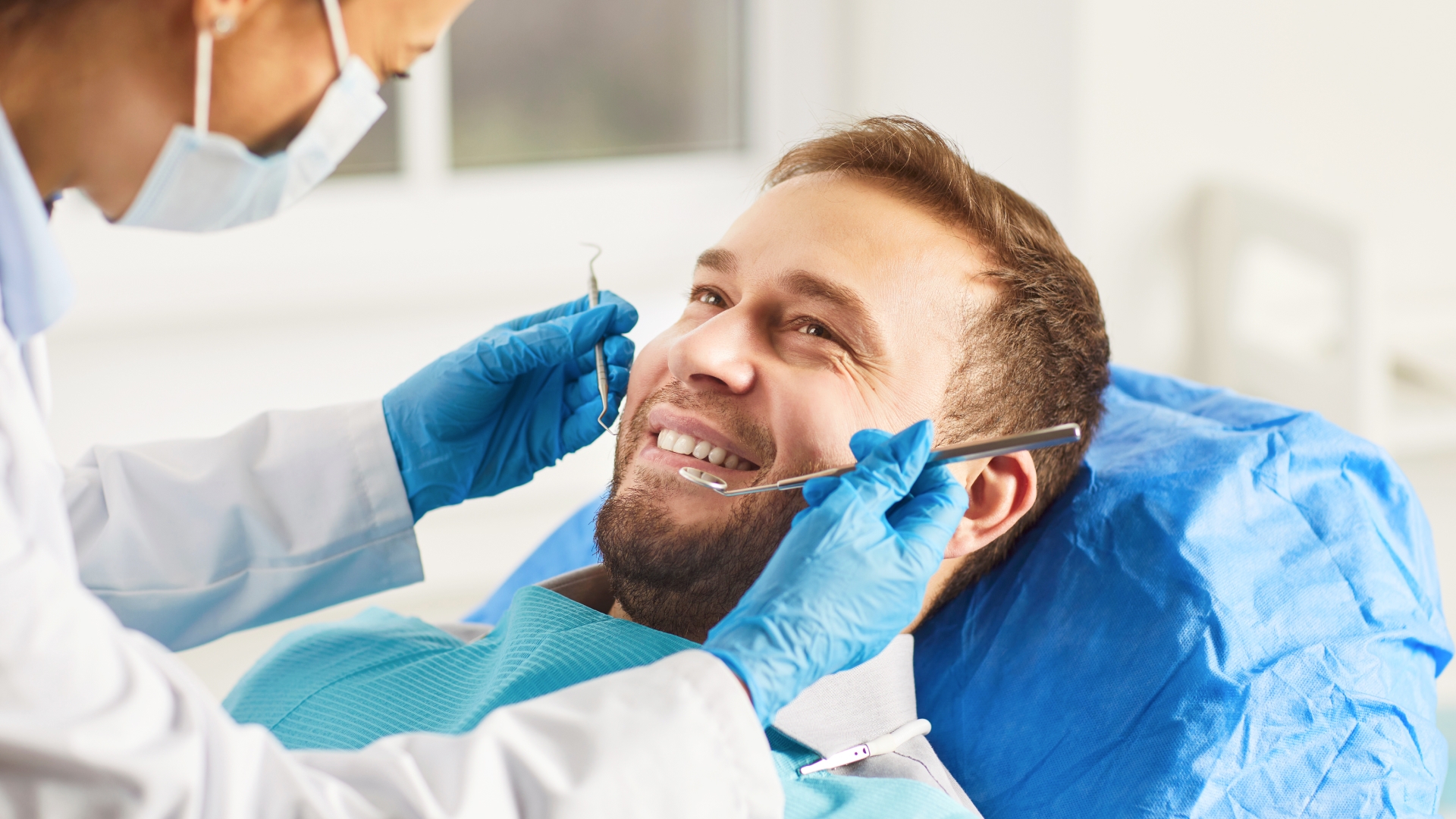
2. Digital treatment planning
This is where technology makes all the difference. Using advanced 3D treatment planning software like SoftSmile, I map out every stage of tooth movement.
As a general dentist, I find it reassuring to plan my cases alongside an orthodontist — but this depends on your level of orthodontic training. The software generates a step-by-step virtual simulation, allowing both me and the patient to visualize the final result before treatment even begins.

3. Fabrication of custom aligners
Once the plan is finalized, the patient’s custom aligners are manufactured using precise 3D printing and thermoforming techniques. Each set of trays is engineered to apply the correct amount of force needed for that phase of movement.
4. Wearing and changing aligners
The patient wears each set of aligners for one to two weeks, depending on the treatment plan. As mentioned previously, aligners must be worn at least 20-22 hours per day, only being removed for eating, drinking (anything other than water), and oral hygiene.
5. Progress monitoring
Regular check-ins, typically every 6-8 weeks, allow me to assess progress and ensure that teeth are tracking according to the digital plan. If necessary, we make adjustments or refinements to keep treatment on course.
(Newer technology allows you to monitor treatment remotely, therefore you may be able to reduce the frequency of check-ins in future!)
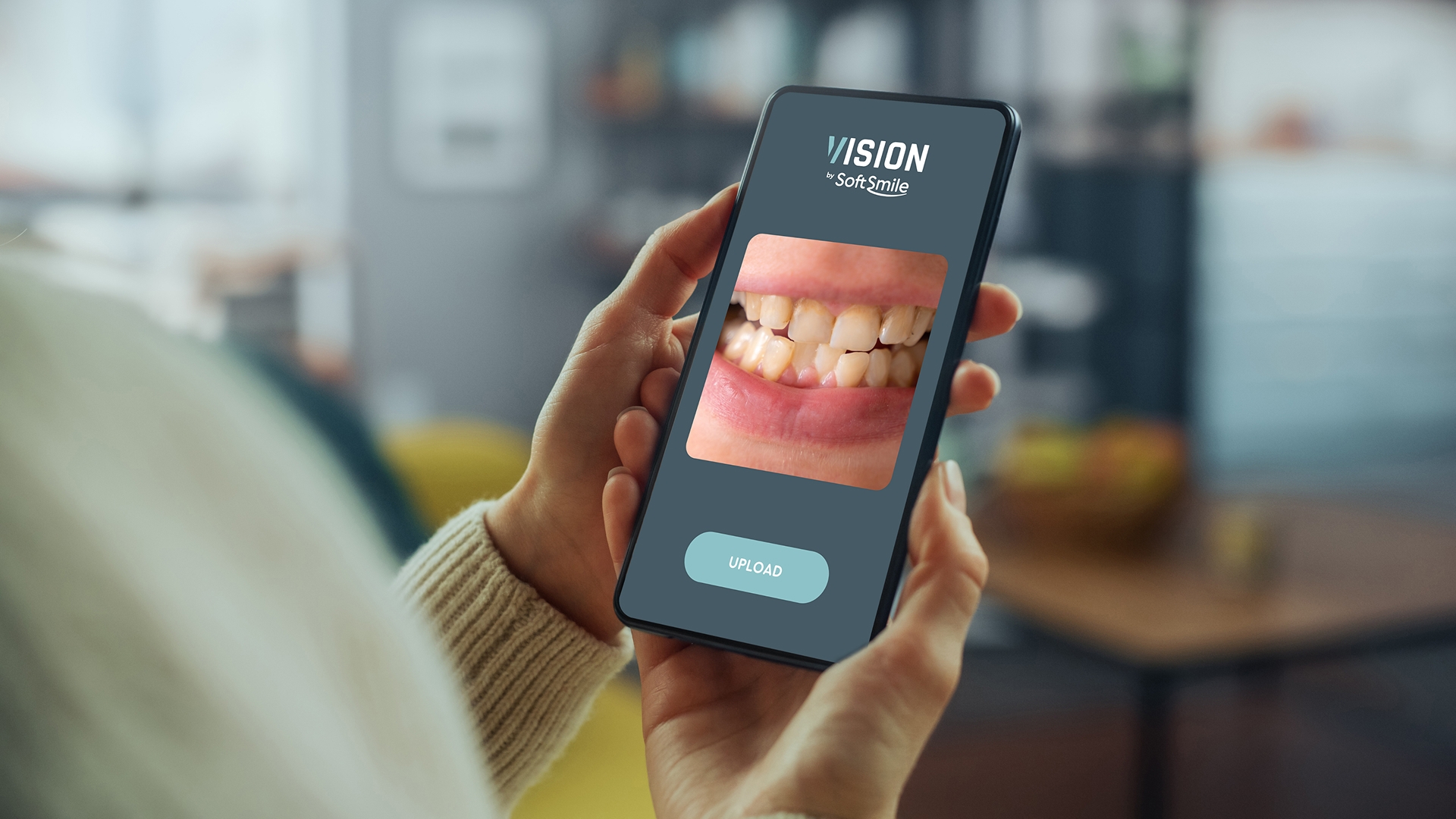
6. Refinements and final adjustments
Some cases require additional refinement aligners to perfect the final positions. These are usually included in the treatment plan and help fine-tune the alignment.
Lastly, I will follow up with relevant restorative planning i.e. resin composite edge bonding or veneers if the patient has additional cosmetic needs.
7. Retention phase
Once the teeth have reached their ideal position, I prescribe custom retainers to maintain the results. Without proper retention, teeth tend to relapse, so this final step is crucial for long-term stability.

What Can Clear Dental Aligners Treat?
With the right level of orthodontic knowledge, clear aligners are capable of treating a wide majority of malocclusions.
Over the past two decades, they have been proven to be highly effective for mild to moderate malocclusions. However, with advancements in material science and digital treatment planning, I have seen clinicians taking on increasingly complex cases in recent times. Solutions like SoftSmile make this far easier with its range of treatment modalities.

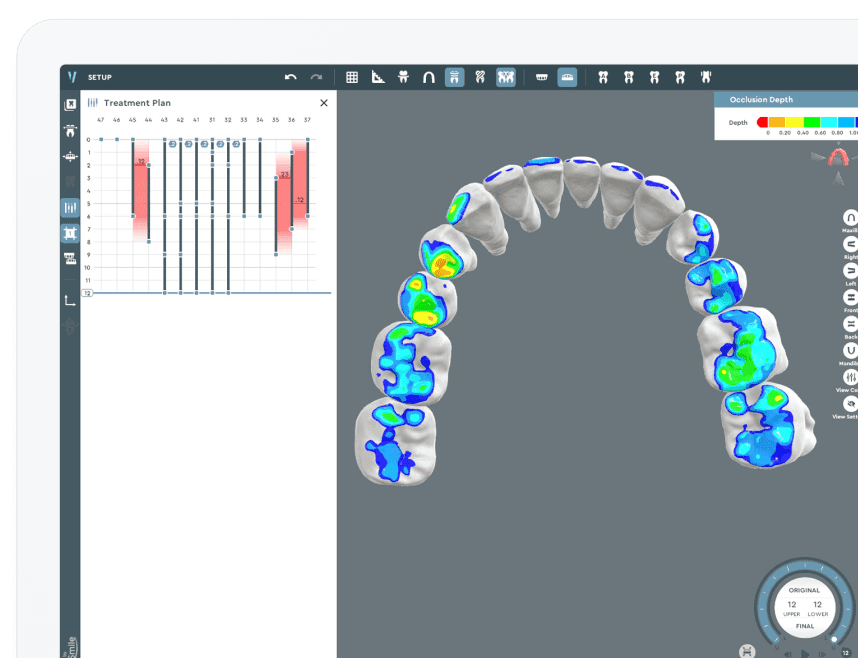
Regardless, case selection remains critical — certain complex movements may still require fixed appliances or adjunctive techniques.
Here are the primary conditions that clear dental aligners can treat:
- Crowding : When there isn’t enough space in the dental arch, teeth overlap or rotate. Aligners create space by expanding the arch or using interproximal reduction (IPR) to allow for proper alignment.
-
Spacing & diastemas : Gaps between teeth can result from missing teeth, abnormal tooth size, or tongue posture. Aligners move teeth closer together while maintaining proper arch form.
- Overbite (Deep bite) : When the upper front teeth excessively overlap the lower teeth, it can lead to wear, occlusal trauma, and soft tissue irritation. Aligners can help correct overbites by intruding anterior teeth and advancing mandibular incisors, sometimes with bite ramps for better efficiency.
-
Underbite (Class III malocclusion) : If the lower teeth extend beyond the upper teeth, aligners can help by proclining the maxillary incisors and retroclining the mandibular incisors. However, in cases with skeletal discrepancies, additional treatment such as elastics or surgery may be needed.
-
Crossbite : When some upper teeth sit inside the lower teeth, this can cause uneven wear, gum recession, or jaw asymmetry. Aligners can assist in buccal expansion and tipping movements to correct the bite, though posterior crossbites may require additional arch development.
- Open Bite : If the front teeth don’t touch when the patient bites down, it could be due to tongue thrust, parafunctional habits, or skeletal discrepancies. Aligners can help by aiding in anterior extrusion and improving vertical control, especially when combined with myofunctional therapy or elastics.
-
Mild to Moderate Rotations & Tipping Movements : Aligners are effective at correcting small to moderate rotations and angulations, especially for incisors and premolars. However, rotations over 30 degrees or complex root movements may require attachments or elastics for better control. (Complex cases can be undertaken with the right level of support. Digital treatment planning software like SoftSmile is crucial to maximise patient safety.)
-
Relapse Cases : Patients who experience post-orthodontic relapse can often be treated with aligners, making minor refinements without needing full braces again.
For more complex cases, clear aligners may still be part of the treatment plan, often in combination with elastics, TADs, or sectional fixed appliances.
What Are the Benefits of Aligners Compared to Braces?
My initial apprehension with clear dental aligners were:
“I have no idea how aligners work — will they move teeth predictably?”
“Will patients trust them?”
“Are aligners comfortable to wear long term?”
On the whole, patients prefer clear aligners to traditional braces. Here are some of the biggest reasons why:
1. Improved aesthetics
Their near-invisibility is a massive benefit.
Made from transparent thermoplastic, they blend seamlessly with the teeth. Provided your attachments are well-matched, they are a discreet option for professionals, teenagers, and anyone concerned about their appearance during treatment.
2. Better hygiene
Aligners can be taken out for eating, brushing, and interdental cleaning, allowing patients to maintain proper oral hygiene throughout treatment. This reduces the risk of plaque buildup, decalcification, and gingival inflammation—common concerns with fixed braces, where food can easily get trapped around brackets and wires.
3. Increased comfort
Aligners eliminate the soft tissue irritation that many patients experience with braces.
Many patients suffer with ulcers and abrasions from the brackets and wires on fixed appliances, making treatment uncomfortable. The smooth plastic alleviates these concerns entirely.
Additionally, since aligners use gradual force to shift teeth, patients often report less discomfort compared to wire tightening in braces.
4. Fewer visits
Braces require regular adjustments, which can be inconvenient for patients with busy schedules. With aligners, progress is pre-planned through digital treatment software, meaning fewer in-person visits — typically every 6—8 weeks instead of monthly tightening appointments.
5. No dietary restrictions
Patients hate changing their diet.
Braces come with a long list of restricted foods — no hard, sticky, or crunchy snacks that could damage brackets or get lodged in wires. Aligners are removed while eating, allowing patients to enjoy far less restrictions in their diet.
(However, it is important to note a softer diet must be advised to avoid premature breakage of attachments.)
6. Predictable treatment planning
Patient dissatisfaction can cause a great deal of stress for clinicians. After all, it is only natural after spending months to plan orthodontic movement.
Clear aligners are planned using advanced 3D imaging software, allowing both the dentist and patient to visualize the entire treatment process before it even begins.
Each tooth movement is mapped out precisely, improving predictability and efficiency. Unlike braces, where adjustments are done incrementally in response to progress, aligners follow a predefined digital roadmap for tooth movement.
7. Fewer emergencies
Broken brackets, loose wires, and poking archwires are common issues with braces that often require urgent dental visits. Since aligners are a single-piece appliance with no fixed components, there are fewer chances of orthodontic emergencies, reducing the need for unscheduled appointments.
Key Considerations Before You Offer Clear Aligners
Aligner therapy isn’t just about handing patients a series of trays — it requires careful monitoring, strategic interventions, and patient education.
These are some of my key considerations to optimize treatment outcomes:
Clinical Considerations
-
Case selection is key. Clear aligners work best for mild to moderate malocclusions. Severe rotations, deep bites, and complex movements may still require a hybrid approach or fixed appliances. Proper case selection ensures predictable results.
-
Digital treatment planning is non-negotiable. Successful aligner therapy starts with precise planning. Use advanced treatment planning software to minimize unwanted movements.
-
Patient compliance will determine your success. You must make it very clear to your patient — their aligners must be worn 20-22 hours per day for effective tooth movement. Educate them on the risks of non-compliance, including delayed results and compromised outcomes.
-
Auxiliaries improve control. Some movements, such as extrusion, rotations, and bodily translation, require additional anchorage. Elastics can be especially important in correcting Class II or III discrepancies.
-
Monitor IPR carefully. Interproximal reduction (IPR) should be assertive, yet conservative. General dentists tend to under-prepare; which requires more refinements due to insufficient movement. Equally, it is important to remain conservative to prevent unnecessary removal of enamel.
-
Factor in refinements. Most aligner cases require mid-course corrections or refinements to fine-tune movements. Setting patient expectations early can prevent frustration when additional trays are needed.
Patient Considerations for Aligners
-
Be consistent. The effectiveness of treatment depends on consistent wear. Patients should be made fully aware of the consequences of poor compliance.
-
Maintain good oral hygiene. Unlike fixed braces, aligners allow for easier brushing and flossing. However, patients must be reminded to clean their aligners and teeth before reinserting trays to prevent bacterial buildup and decay..
-
Use chewies. Improper seating can cause setbacks in treatment. Chewies (soft silicone cylinders) help seat aligners properly, ensuring effective force application.
-
Store carefully. It is easy to tuck away aligners in your pocket, or napkin when eating out. This could cause inadvertent damage. Emphasize the importance of storing aligners in their protective case to avoid costly replacements.
-
Warn over speech changes. Most patients accept speech changes — so long as they are told beforehand. Reassure them that any lisp or discomfort typically resolves within a few days of continuous wear.
-
Follow the prescribed schedule. It is tempting to get impatient with the prescribed schedule. As a result, patients can tend to speed ahead and disrupt the treatment sequence. Patients should follow their prescribed wear schedule and check in regularly for progress assessments.
-
Retention is essential. I would argue retention is just as important as any other stage of clear aligner therapy.
Once treatment is complete, teeth will relapse without proper retention. Patients should transition to custom retainers and follow long-term wear recommendations to maintain results.
How do you get started with digital planning?
The clinical aspect of clear aligner therapy is only a small portion of what determines your success.
Successful clear aligner treatment starts with precise digital planning. With proper case selection, digital planning, and patient compliance, you can provide a great service to your patients.
SoftSmile is becoming increasingly popular amongst clinicians — providing predictable, efficient, and clinically sound outcomes.
Why Choose SoftSmile?
-
AI-assisted treatment planning – Automates case setups for accuracy and efficiency.
-
Made by doctors, for doctors – The software has been designed with a typical clinical workflow to avoid disruption
-
Total control – Allows full adjustment of treatment parameter to your preference
-
Seamless integration – Compatible with major intraoral scanners and lab workflows.
-
Cost-effective – Reduces your lab bills significantly
Try SoftSmile for free — and see how it can work in your clinic today.

Dr Sugz Maha
General Dentist
Sign up for our newsletter!
Case Studies, Podcasts, Ebooks, Events, Webinars, Company news, and more...
By subscribing you agree to the Terms of Use and Privacy Policy.

